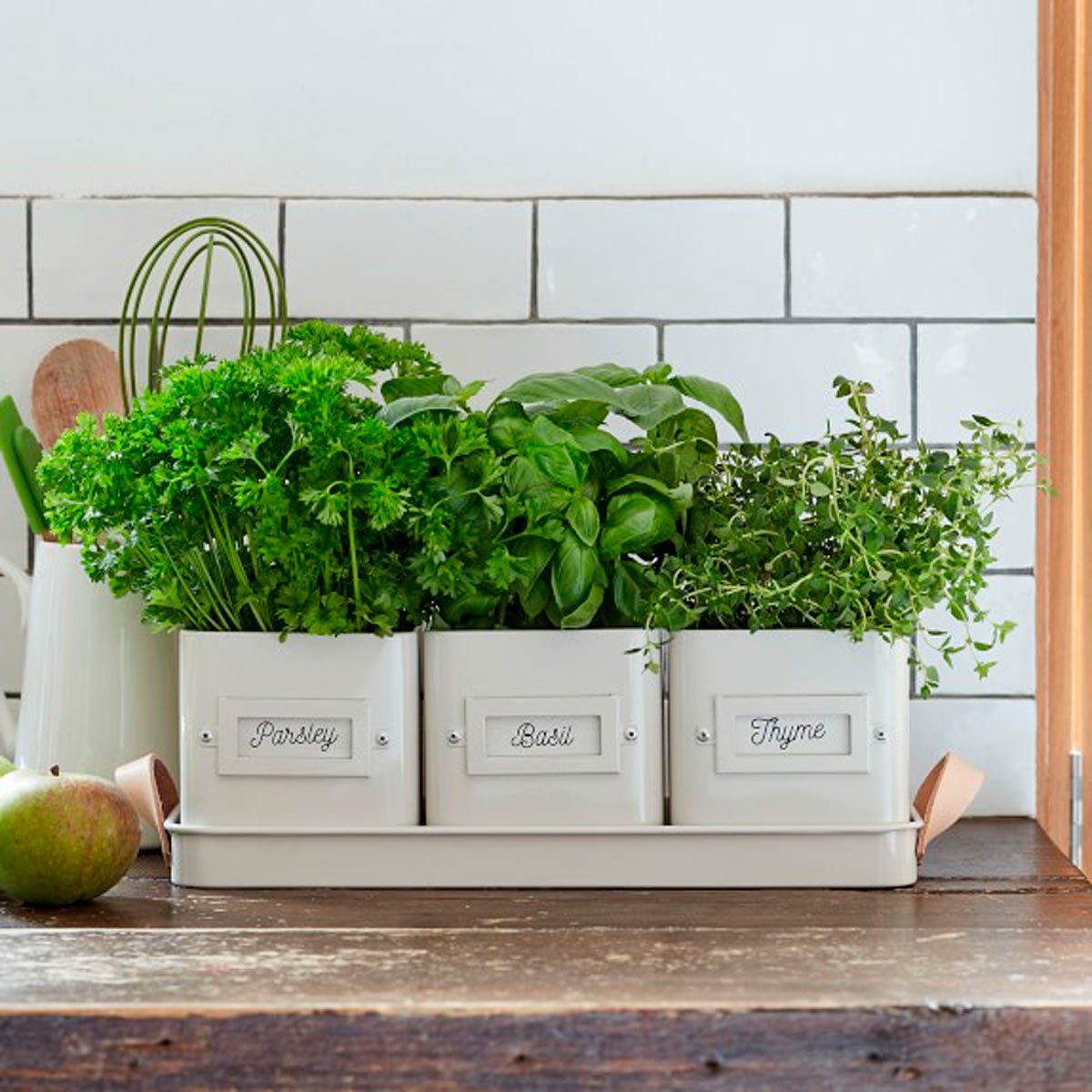How to Plant a Kitchen Herb Garden: A Comprehensive Guide
/sb10062327at-001-copy-56a47d5f5f9b58b7d0d74296.jpg)
Are you tired of buying expensive herbs from the grocery store? Do you dream of having fresh, homegrown herbs at your fingertips? Imagine the aroma of basil, rosemary, and thyme wafting through your kitchen as you cook. Planting a kitchen herb garden is not only a rewarding hobby but also a practical way to enhance your culinary adventures. Let's dive into the world of herb gardening and discover how to plant a kitchen herb garden that will transform your cooking experience.
Why Start an Indoor Herb Garden?
An indoor herb garden offers numerous benefits. Firstly, it provides you with a constant supply of fresh herbs, which are often more flavorful and nutritious than store-bought ones. Secondly, it adds a touch of greenery to your kitchen, creating a pleasant and inviting atmosphere. Lastly, herb gardening is a therapeutic activity that can reduce stress and bring a sense of accomplishment.
Getting Started: Essential Herb Gardening Tips
Before you dive into planting, let's cover some essential herb gardening tips to ensure your garden thrives.
Choosing the Best Herbs to Grow
Selecting the right herbs is crucial. Some of the best herbs to grow indoors include basil, parsley, chives, mint, and rosemary. These herbs are not only easy to grow but also versatile in the kitchen.
Selecting the Right Containers
Choose containers that have good drainage to prevent root rot. Terracotta pots are a popular choice because they allow air to circulate, keeping the soil healthy. Alternatively, you can use recycled containers like old tea tins or mason jars for a unique touch.
Soil and Light Requirements
Herbs generally prefer well-draining soil. A good potting mix designed for herbs will do the trick. As for light, most herbs need at least 6-8 hours of sunlight per day. Place your pots near a south-facing window for optimal light exposure.
Step-by-Step Guide to Planting Your Kitchen Herb Garden
Now that you have the basics down, let's get into the nitty-gritty of planting your kitchen herb garden.
Step 1: Gather Your Materials
You'll need:
- Herb seeds or seedlings
- Containers with drainage holes
- Potting soil
- Watering can
- Small trowel or spoon
Step 2: Prepare Your Containers
Fill your containers with potting soil, leaving about an inch of space from the top. Ensure the soil is loose and well-aerated.
Step 3: Plant Your Herbs
If you're using seeds, follow the instructions on the packet for planting depth and spacing. If you're using seedlings, gently remove them from their nursery pots and plant them at the same depth as they were originally growing.
Step 4: Water and Care
Water your herbs thoroughly after planting, ensuring the soil is moist but not waterlogged. Place your pots in a sunny spot and keep an eye on their water needs. Most herbs prefer to be watered when the top inch of soil is dry.

Herb Garden Care: Keeping Your Plants Healthy
Caring for your herb garden is essential for its longevity and productivity. Here are some tips to keep your plants healthy:
Watering
Consistent watering is key. Overwatering can lead to root rot, while underwatering can stunt growth. Aim for a happy medium where the soil is consistently moist but not soggy.
Fertilizing
Herbs don't require much fertilizer, but a light application of a balanced, water-soluble fertilizer every few weeks can boost growth. Avoid over-fertilizing, as it can lead to excessive leaf growth at the expense of flavor.
Pruning
Regular pruning encourages bushier growth and prevents your herbs from becoming leggy. Pinch back the growing tips of your plants to encourage side shoots. This not only keeps your plants compact but also provides you with a steady supply of fresh herbs.
Troubleshooting Common Issues
Even with the best care, issues can arise. Here are some common problems and their solutions:
Yellowing Leaves
Yellowing leaves can indicate overwatering or a lack of nutrients. Check your watering schedule and consider adding a light fertilizer.
Pests
Indoor herb gardens can attract pests like aphids and spider mites. Regularly inspect your plants and treat any infestations promptly with insecticidal soap or neem oil.
Slow Growth
If your herbs are growing slowly, they may not be getting enough light. Move them to a sunnier spot or consider using grow lights to supplement natural light.

Conclusion: Embrace the Joy of Herb Gardening
Planting a kitchen herb garden is a rewarding journey that brings fresh flavors and a touch of nature into your home. By following these steps and tips, you'll be well on your way to growing a thriving indoor herb garden. Remember, gardening is a learning process, so don't be discouraged by setbacks. Embrace the experience and enjoy the fruits (or herbs) of your labor.
FAQs
1. What are the best herbs to grow indoors?
Some of the best herbs to grow indoors include basil, parsley, chives, mint, and rosemary. These herbs are easy to grow and versatile in the kitchen.
2. How much sunlight do herbs need?
Most herbs need at least 6-8 hours of sunlight per day. Place your pots near a south-facing window for optimal light exposure.
3. How often should I water my herbs?
Herbs prefer to be watered when the top inch of soil is dry. Aim for a happy medium where the soil is consistently moist but not soggy.
4. Can I use grow lights for my herb garden?
Yes, grow lights can be a great supplement to natural light, especially if your kitchen doesn't get enough sunlight. Choose full-spectrum LED grow lights for the best results.
5. How do I prune my herbs?
Regular pruning encourages bushier growth. Pinch back the growing tips of your plants to encourage side shoots. This not only keeps your plants compact but also provides you with a steady supply of fresh herbs.
0 Response to "How to Plant a Kitchen Herb Garden: A Comprehensive Guide"
Post a Comment